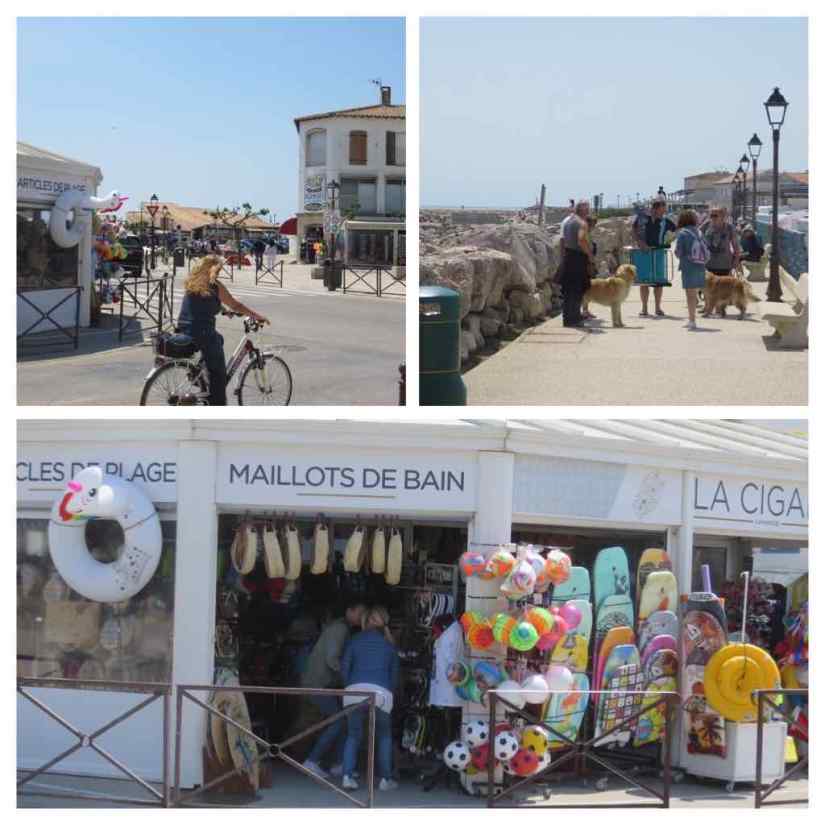On Wednesday we headed south to French cowboy country. The Camargue is located in a marshy delta between the Grande and Petite Rhone rivers. It is an enormous area (346,000 acres) of flat land: salt marshes, pastures, rice paddies and sandy beaches. The Camargue is known for sleek white (native) horses, feisty little black bulls, and large flocks of wetland birds.
The area prides itself on its cowboy heritage. We stopped at the Musee de la Camargue to get a taste of the place and the culture.


Like the American West, there’s a lot of emphasis on horses and cows.


Even if a lot of the those horses are now plodding along with only tourists atop, and some of the wranglers are cast in bronze.

Denim (“serge de Nîmes”) was invented here as rugged wear for cowboys. (Nimes sits at the entry to the Camargue.) However, traditional clothing styles are quite different from American cowboy fashion.

As a toilet aficionado, I was most impressed with the ecologically efficient outhouses provided at visitor centers in the Camargue.

From the Musee, we drove further south to the Parc Ornithologique du Pont De Gau. It’s a nature reserve/bird park for flamingos and other wetland birds. But mostly it’s home to flamingos – thousands and thousands of flamingos.





There were white storks.


Grey herons.


Yellow crowned night herons.

Black-winged stilts.

European beaver, nutria and muskrats. (We think this is a nutria.)

A most elegant bug house.
But mostly there were flamingos.




Fed up (in the falconry sense) with flamingos, we drove all the way south to the Mediterranean Sea.
 Stes Marie de-la-Mer is a seaside town, much like every seaside town we’ve visited in Wales and Cornwall: long sandy beaches, huge bulwarks to prevent the waves from reclaiming said beaches, and hordes of sunning/splashing humans. (Would aliens mistake them for an exotic species of seal?).
Stes Marie de-la-Mer is a seaside town, much like every seaside town we’ve visited in Wales and Cornwall: long sandy beaches, huge bulwarks to prevent the waves from reclaiming said beaches, and hordes of sunning/splashing humans. (Would aliens mistake them for an exotic species of seal?).

However, this town has Gypsies. Every May 24, thousands of Gypsies travel to Stes Marie for the Gitan Pilgrimage, a festival in honour of St. Sara, who traveled here from Palestine in the 16th century. Although the festival was a week away, Gypsies were already evident: most of the town’s seaside parking lot was given over to modern – and some semi-traditional – Gypsy caravans (with a modern form of horsepower).

Discover more from Joni's Jottings
Subscribe to get the latest posts sent to your email.




